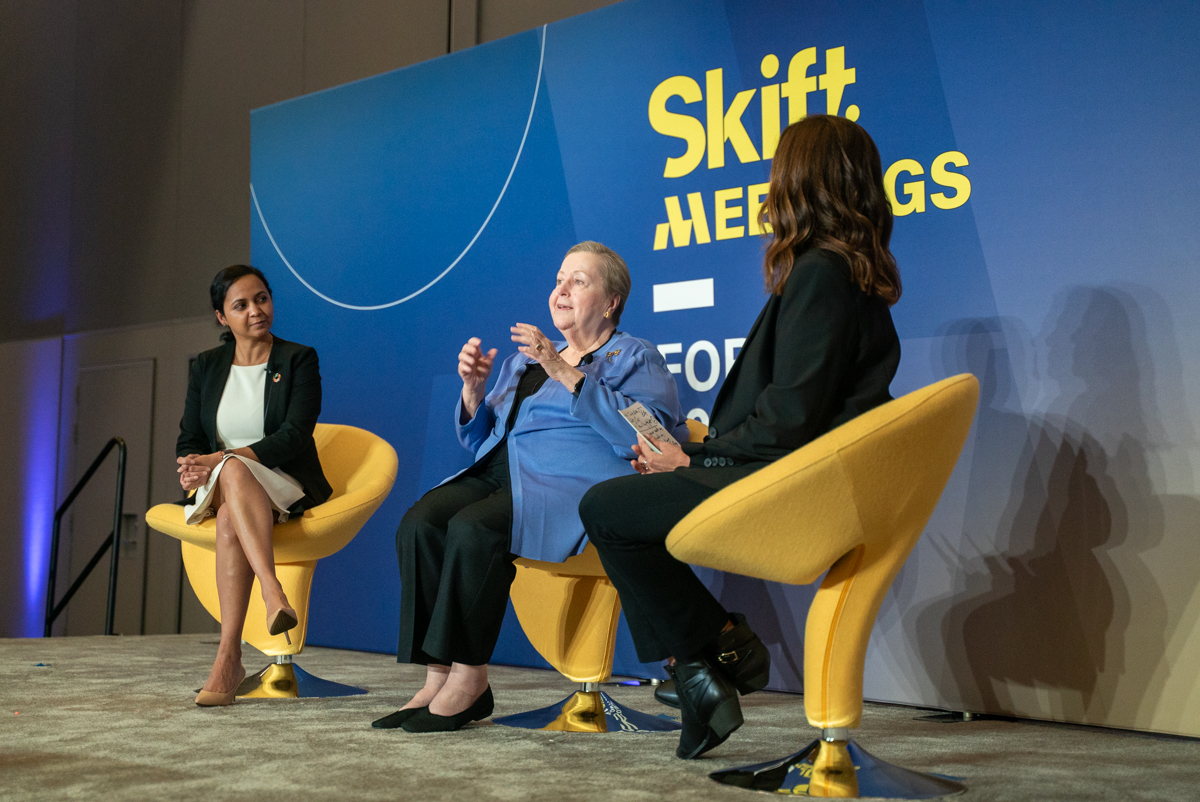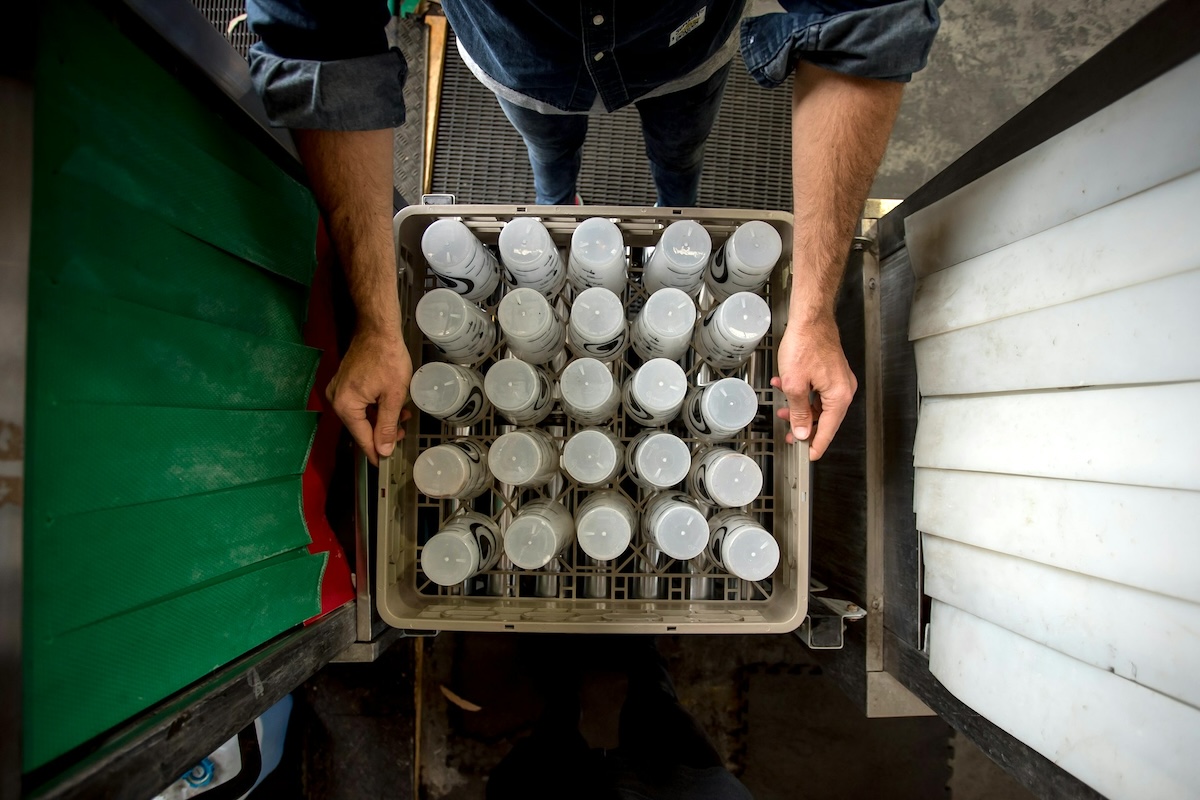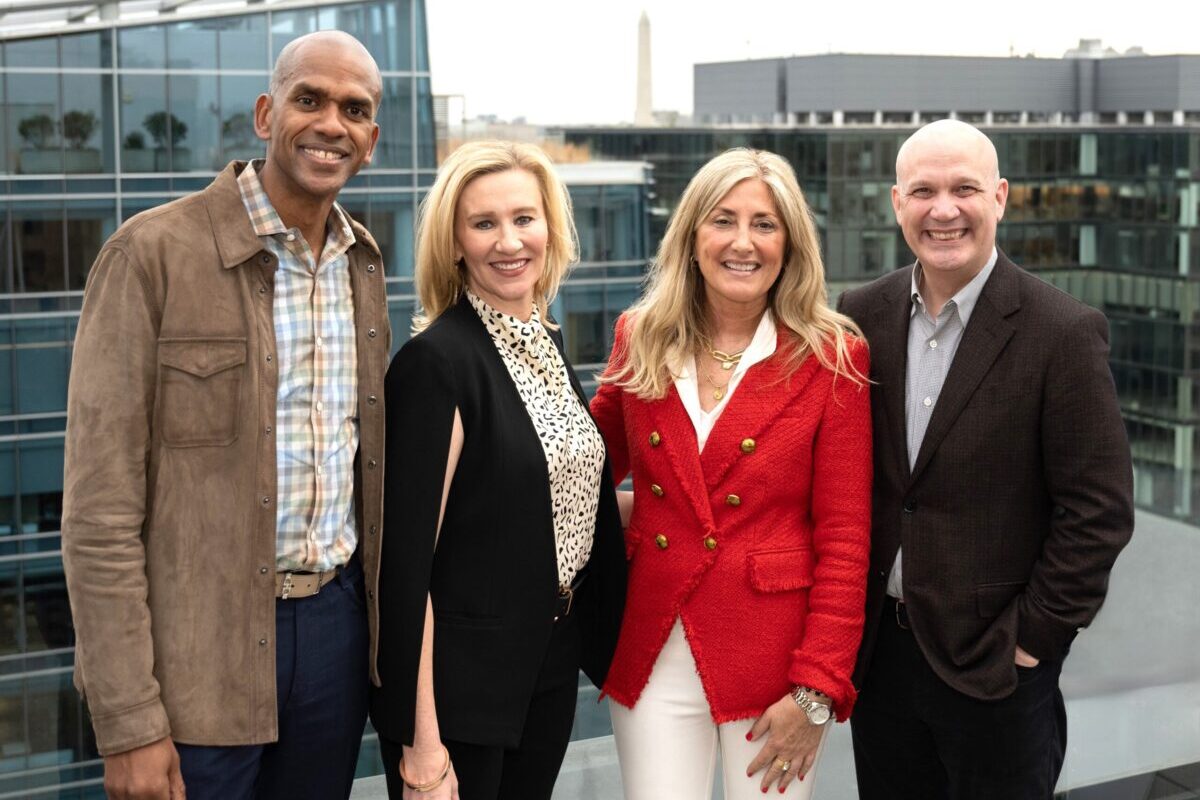Skift Take
It is estimated that events produce ten percent of the world’s carbon. Imagine the difference the industry could make if it significantly reduced its carbon footprint.
When it comes to sustainability, doing something is so much better than doing nothing at all, was the premise of the session during Skift Meetings Forum featuring Yashi Dadhich, director of energy and sustainability for Javits Center, and Janice Lachance, interim executive director and CEO of the American Geophysical Union (AGU), a nonprofit organization of Earth, atmospheric, ocean, hydrologic, space, and planetary scientists and enthusiasts.
The session stressed the impact the industry can make by making sustainability a focus, as it is reported that events produce 10 percent of the world’s carbon.
Starting with Sustainable Sourcing
AGU’s meetings have sustainability at their core, embodying three core elements, and are economically feasible, environmentally sound, and socially equitable.
“Every RFP, every conversation we have is really grounded in that definition of sustainability, and that’s how we’ve been able to make our members comfortable with coming to a large meeting, traveling to it because they know that that’s just a core principle and value for our organization,” said Lachance.
Sustainability is an AGU consideration when choosing venues and destinations. Dadhich shared what makes Javits North sustainable. The 1.3 million-square-foot, $1.5 billion addition features a one-acre farm that produces more than 50 crops. “We have everything from arugula to zucchini here, A to Z,” said Dadhich. “It’s from the rooftop to the plate.”
JavitsCares is a program that has diverted tens of thousands of convention leftovers from the landfill. Everything from furniture, backpacks, pens, and pads to leftover food is donated to local organizations.
“As you can imagine, a lot of stuff is left behind by the groups who meet in our buildings. Instead of putting all of that into the landfill, we have created this program where if any product which is left behind is in good condition, we find a home for it.” said Dadhich. “I am excited that this year alone we have donated more than 20 tons of non-food items and more than 60 tons of food items,” she added.
Another events industry environmental culprit is carpet. With this in mind, Javits North features a carpet that consists of squares, so if an area is soiled or ripped, only the square needs to be replaced.
Missing a Call to Action
Both Dadhich and Lachance participated in the Nest Climate Campus the week prior to the Skift Meetings Forum. Over the years, attending various different sustainability summits, Dadhich said a call to action has been missing. “We need to take action, concrete action, concrete steps towards leading to that point of net zero,” Dadhich said.
Collective Action Required
How does the industry get to this point? “We have to move from individual action to systemic change,” said Lachance. “What could we do if did it together? “
She stressed the importance of partnerships. Her organization, for instance, has partnered with PCMA on five tenets — designing sustainable events; convening discussions related to risk and climate change; supporting the business events community with education and tools; harmonizing data and establishing goals for meaningful progress in the reduction of carbon and recognizing innovation and thought leadership in the business events industry.
“We are trying to find some common denominators. We talk about the importance of data, but everybody measures slightly different things. Could the events industry get together and agree on a scientifically proven methodology to gather data and make it transparent so that everyone’s collecting the same thing so that it’s not the responsibility necessarily of the meeting planner to figure out whether it’s apples to apples or apples to oranges,” said Lachance.
Standardization Remains an Issue
The same holds true for sustainability standards. “We all know what needs to be done. Everybody’s doing something just a little different,” said Lachance.
The Net Zero Carbon Events initiative was explained by Dadhich, which is focused on driving towards net zero by 2050. Another goal is to reduce emissions by 2030, in line with the Paris Agreement.
“When we are working individually, the impact is just local. But we need to move past that, and we need to collaborate and get to the point where we have that impact, which is amplified, and which has that multiplied effect on other industries as well. And I feel our industry, the event industry, the hospitality industry has that power to lead by example,” said Dadhich.
“The climate situation isn’t getting any better, and it’s not going to get better on its own. It’s going to require some really dramatic action. And I think if we step up and take some of these steps that you’ve been hearing about all day, it’ll keep it from having people tell us what to do. So, let’s take control of it. Let’s take a leadership role and really make a big difference,” said Dadhich.





